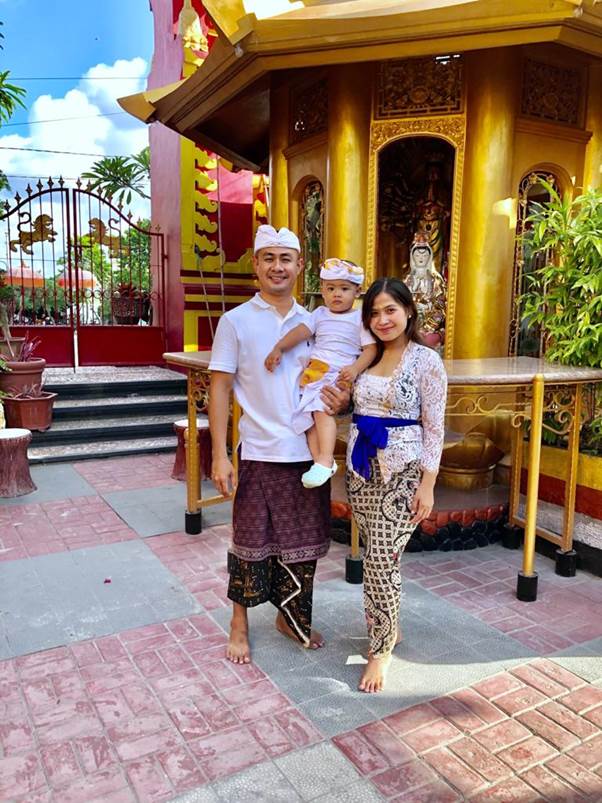Bali is steeped in tradition and culture, part of this rich heritage comes in the form of the clothing worn for daily life, religious ceremonies at the family temple or main temples and holy days. The more I learn about the culture of Bali, the more I fall in love with the island and its special people.
The clothing worn by both men and women have different purposes.
So, the man usually wears a Sarong, Saput/Kancut and Udeng. Men wear a sarong that is wrapped from left to right, being a symbol of truth/Dharma usually covering down to the ankle. The belief is that men must be more agile than woman as men are responsible for the for the protection of women. The Sarong will have a fold in the front. The Saput/Kancut is used to cover the area from the waist to the thigh to cover the area around the male for modesty. The area below the waist is considered low spirit and a sash is used over the sarong and tied off to stop any negativity travelling up the body. The colours are manly white to signify purity. The array of beautiful Batik shirts is wonderful. They are so comfortable to wear and very cool even in hot weather. The most recognisable feature of clothing is the headdress worn by men and boys, called the Udeng. This is to protect the spirit, mind and positivity as it is the part of the body closest to The Gods.
When you notice seeds or Mebija on the forehead of any Balinese person it usually means they have been a ceremony or maybe a one of the daily offerings. Please remember never to tap anybody on the head, it is very impolite and even if it deemed ok in your own culture, it’s not ok in Bali. (While riding a motorbike or scooter if you are wearing an Udeng you are not required to wear a motorbike helmet).
Women wear a slightly different version of the Sarong called a Kamben, usually made of Batik. It’s wrapped tightly so no flaps or folds are seen. The blouse known as a Kebaya is also accompanied by a sash. Its sometimes worn with a corset underneath. The Kebaya was only introduced during the Dutch colonialism of Indonesia and Bali.
More ornate costumes are worn for certain ceremonies including weddings and the teeth filing ceremony. It all forms part of this wonderful, unique islands culture and heritage. Embrace it, love it, respect it.



